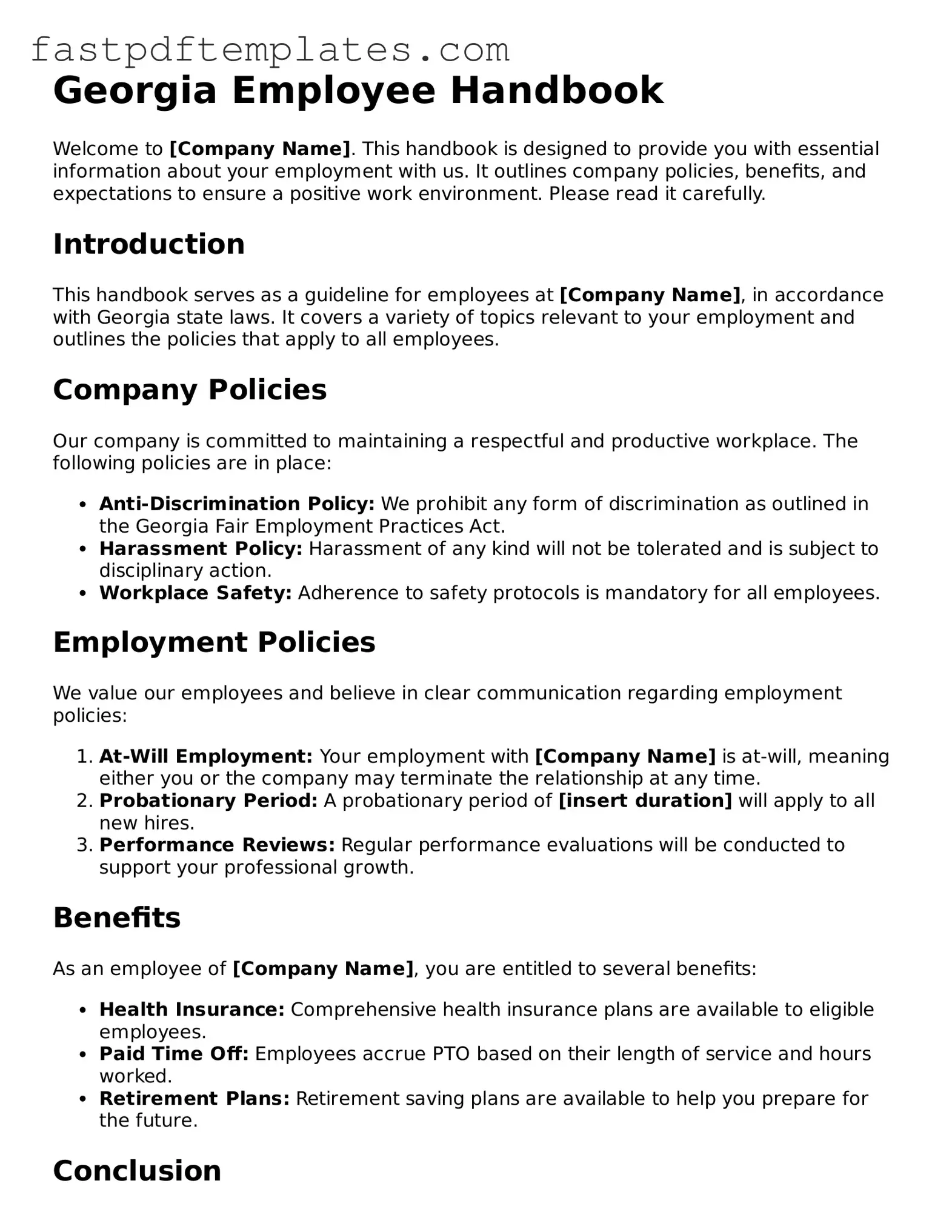Georgia Employee Handbook
Welcome to [Company Name]. This handbook is designed to provide you with essential information about your employment with us. It outlines company policies, benefits, and expectations to ensure a positive work environment. Please read it carefully.
Introduction
This handbook serves as a guideline for employees at [Company Name], in accordance with Georgia state laws. It covers a variety of topics relevant to your employment and outlines the policies that apply to all employees.
Company Policies
Our company is committed to maintaining a respectful and productive workplace. The following policies are in place:
- Anti-Discrimination Policy: We prohibit any form of discrimination as outlined in the Georgia Fair Employment Practices Act.
- Harassment Policy: Harassment of any kind will not be tolerated and is subject to disciplinary action.
- Workplace Safety: Adherence to safety protocols is mandatory for all employees.
Employment Policies
We value our employees and believe in clear communication regarding employment policies:
- At-Will Employment: Your employment with [Company Name] is at-will, meaning either you or the company may terminate the relationship at any time.
- Probationary Period: A probationary period of [insert duration] will apply to all new hires.
- Performance Reviews: Regular performance evaluations will be conducted to support your professional growth.
Benefits
As an employee of [Company Name], you are entitled to several benefits:
- Health Insurance: Comprehensive health insurance plans are available to eligible employees.
- Paid Time Off: Employees accrue PTO based on their length of service and hours worked.
- Retirement Plans: Retirement saving plans are available to help you prepare for the future.
Conclusion
This handbook is comprehensive, but it is not exhaustive. For questions regarding specific policies or concerns, please contact your supervisor or HR representative. We are committed to ensuring a supportive and fair workplace for all employees.
Acknowledgment
By signing below, you acknowledge that you have received and read the Georgia Employee Handbook and understand the policies within.
Employee Name: [Employee Name]
Employee Signature: _____________________
Date: [Date]
